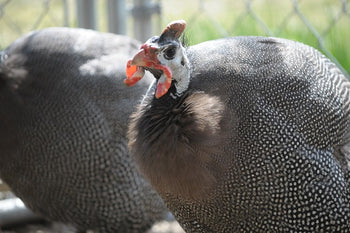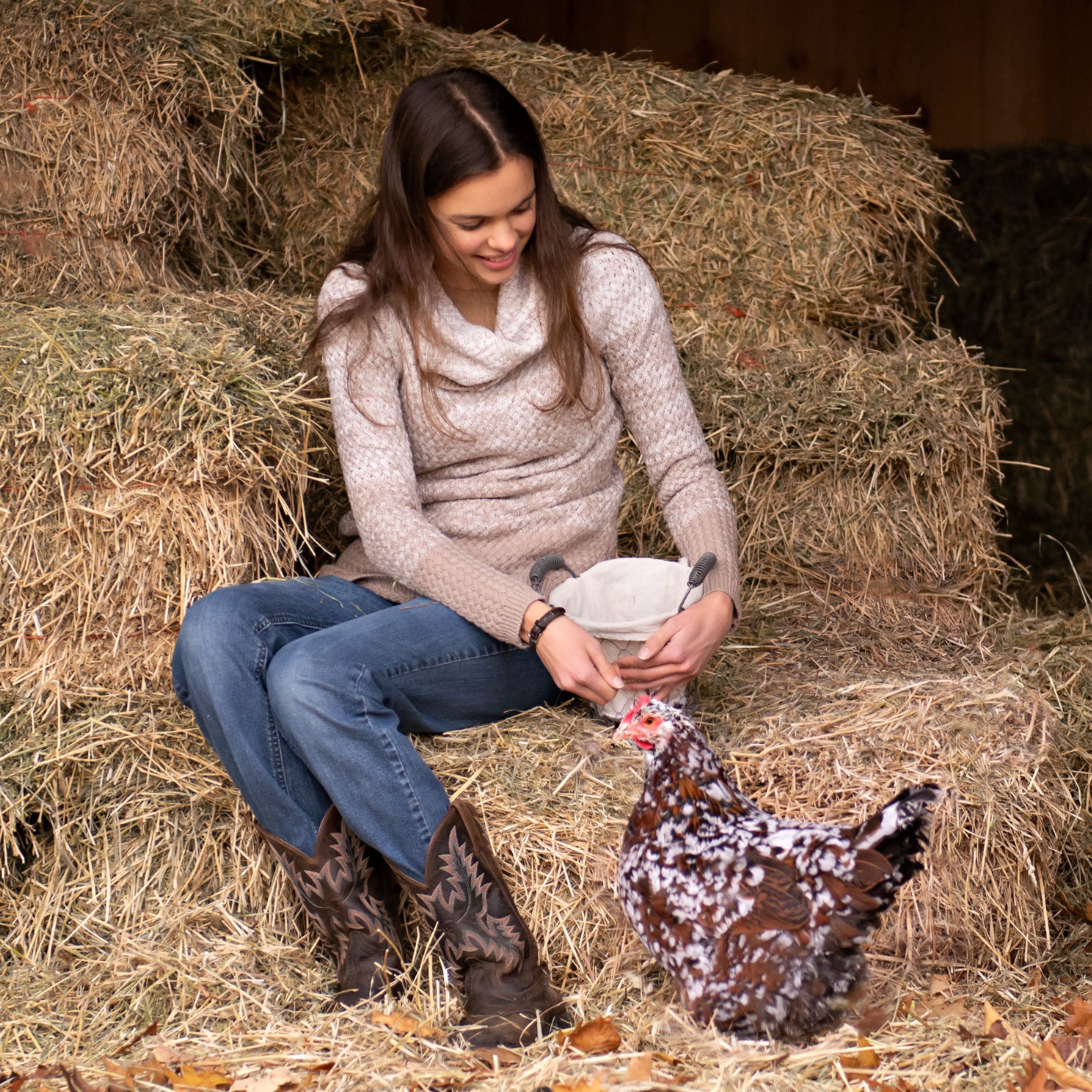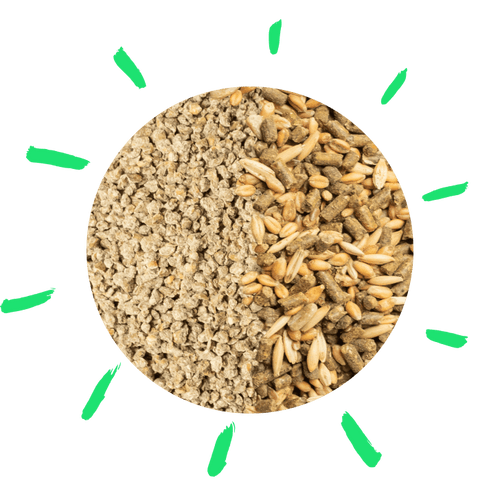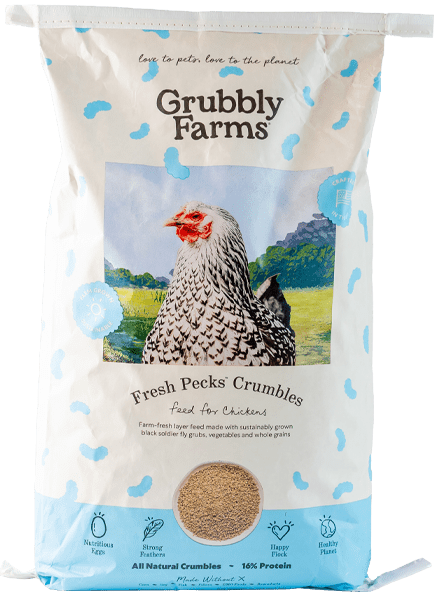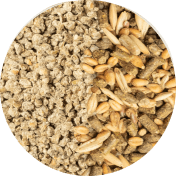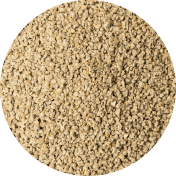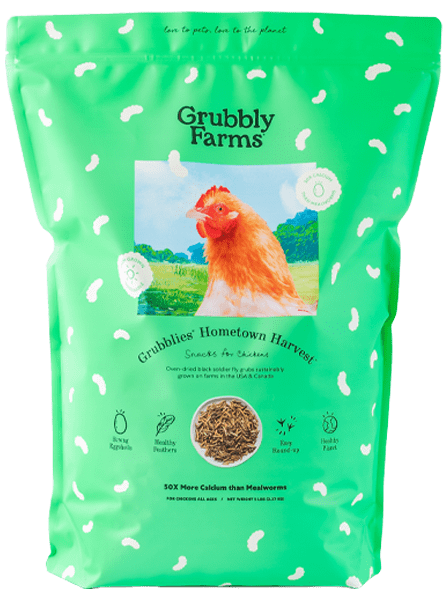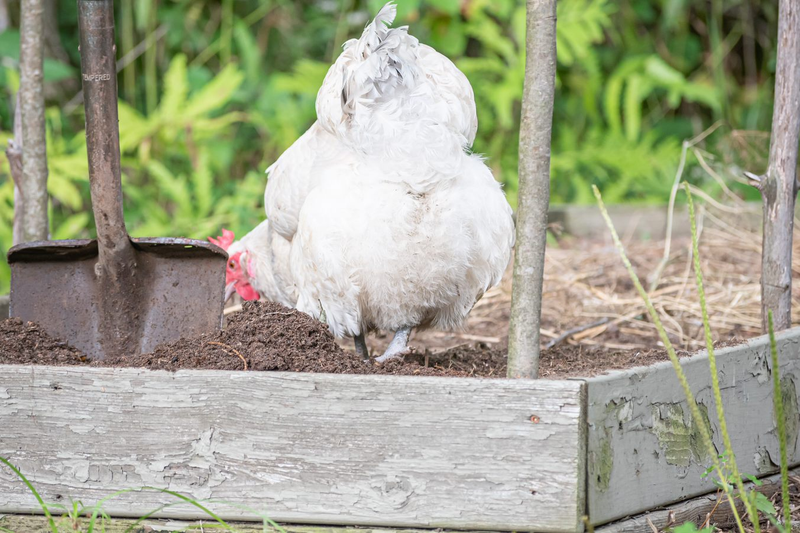Guinea fowl can seem rather strange looking and intimidating at first, but once you get to know them, they turn into fascinating and wonderful additions to your backyard. Unlike chickens, guineas are very independent, making them an easy poultry species to raise. Adding guinea fowl to your backyard or homestead can provide you with the benefits of pest control, flock guardians, and even eggs or meat. Let’s look at what it takes to raise guinea fowl!
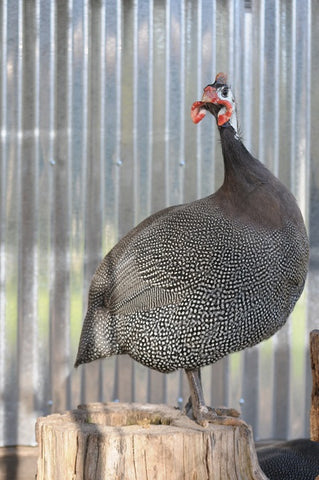
Getting to Know Guinea Fowl
Guinea fowl are a species of poultry native to Africa. They were first introduced to Europe in the 15th century and came to the Americas with the early settlers. There are several different species of guinea fowl, including:
- White-breasted
- Black
- Helmeted
- Plumed
- Crested
- Vulturine
All of these guinea fowl are natively wild to Africa, and some species have been more domesticated than others. The helmeted guinea fowl is the most common species raised in a domestic setting.
The helmeted guinea fowl is characterized by a hard, triangular ‘helmet’ on its head. It has two fleshy, stiff wattles that extend below the beak and a severe ‘beetle’ brow over its eyes that give it a rather fierce expression. Helmeted guinea fowl are larger than a standard size chicken and have compact bodies with tight feathering. They also have extremely strong wing and leg muscles. The helmeted guinea fowl can be found in several different color varieties:
- Pearl
- Lavender
- White
- Royal Purple
- Pied
The pearl helmeted guinea fowl is the most common variety of helmeted guinea fowl and it is characterized by a checkered bluish/gray and white feather pattern.
Guinea Fowl vs. Chickens
If you have raised chickens for any length of time and are considering guinea fowl, note a few key differences between the two species.
Domestication
Guinea fowl are not as domesticated as chickens. Their survival instincts are very strong and they are much more independent than chickens. Guinea fowl do best in a free-range environment, where they can forage for a majority of their own food and don’t have a lot of human interaction.
Temperament
Guinea fowl are not known to be friendly, docile, or affectionate like some chicken breeds. They prefer to be left to their own devices with little intervention from their caretakers. Both male and female guinea fowl are very vocal. Their daily noises are low pitched but their alarm calls are very loud and rival that of a rooster crowing.
Hardiness
Since guinea fowl originated from Africa, they tend to be more heat tolerant than chickens but not as cold hardy. Helmeted guinea fowl are one of the hardiest species of guinea fowl and easily survive cold winters as long as they have shelter from the elements. Guinea fowl are more disease resistant than chickens since they have not been overly bred and their genetics are purer than most chicken breeds.
Sexing
When it comes to telling a rooster from a hen in the chicken world, there are some major differences that stand out, such as a larger comb and those sweeping tail feathers. But it's more of a guessing game when it comes to telling male and female guinea fowl apart. Sexing guineas fowl as keets (baby guinea fowl) is practically impossible to do with the naked eye. Even as adults, deciphering male guineas from female guineas is tricky. Male guineas have slightly larger helmets than the females and their wattles are more red. The easiest way to distinguish between a male and female guinea fowl is by their noises. Male guineas make a one-syllable sound, like a ‘check’ noise. Female guineas make a two-syllable sound, like a ‘buckwheat’ noise.
Creating the Ideal Guinea Habitat
Guinea fowl thrive in a natural, free-range habitat. However, they still need protection from predators and the elements. Alternatively, you may choose to keep guinea fowl confined if you don’t have land for them to wander on.
Coop & Enclosure
When building a coop for guinea fowl, allow at least 4 to 5 square feet of floor space per guinea fowl. The more space these birds have in confinement, the less stressed they'll be when they have to stay cooped up. If you are not free-ranging your guinea fowl or have limited free-range times for them, make sure you attach a spacious enclosure to the coop.
For an enclosure, allow at least 10 square feet of space per guinea fowl, but more room is always better if space allows! Also make sure the enclosure is securely fenced in and covered. Not only does this protect the guinea fowl from predators, it also keeps the guinea fowl from escaping. Guinea fowl are excellent fliers and have been known to fly up to 500 feet. Having the enclosure covered is essential for keeping these birds contained. Guineas are also very fast birds, making it nearly impossible to catch them if they escape!
Ideal Environment
When raising guinea fowl, it is ideal to have a free roaming flock that has access to a sheltered coop. Guineas prefer to fend for themselves and love habitats with varied forage and some leafy foliage for cover. Even if your flock of guineas free-range all day, they should still have a safe shelter to return to that protects them from predators, wind, rain, and the cold.
A guinea shelter, or coop, should be spacious and have the proper litter, roosts, and nesting boxes. The litter in the guinea coop should be absorbent, easy to clean, and compostable. Straw or large flake wood shavings work well. Guineas love to roost in high places, so including high roosts in the coop encourages them to stay inside rather than seeking out trees at night. If you hope to collect guinea eggs, provide one nesting box per four to five guinea hens in the coop. Keep the hens penned up during the morning to encourage them to lay in the nesting boxes and not seek out nests elsewhere.
Other important features of an ideal guinea habitat include shade from the sun and a dust bathing area. Leafy foliage can work as an ample source of shade, or you can make a shade shelter for your guineas. A dust bathing area can be as simple as leaving an area of loose dirt where the guineas can all dust bathe together. Dust bathing is an instinctual behavior that also acts as natural external parasite control.

Free-ranging vs. Coop Living
Guinea fowl prefer a free-range lifestyle. They are experts at foraging for a majority of their own food when given access to a varied environment. Having a free-range flock of guineas eliminates the need for a completely fenced in and covered enclosure, although they still need a secure coop for protection from the elements.
Free-range guineas make great pest control and act as wonderful guardian animals. While they may not fight off any intruding predators, they will certainly let you know when something is amiss in the yard! A free-range lifestyle also means you don’t need to clean the guinea coop as often since the birds spend most days outside. However, you have to coop-train the guineas in order for them to return to the coop at night. Coop-train the guineas when they are young by keeping their food and water inside to encourage them to return at night.
In some cases, raising guineas in a confined environment is necessary. If you're raising guineas for selective breeding, eggs, meat, or for show, you may choose to keep the guineas confined to a coop and enclosure. Make sure the coop and enclosure are as big as possible when keeping guineas in a confined environment.
You won’t have to worry about the guineas wandering into the neighbor’s garden or roosting in trees at night. But you will have to pay more attention to their diet since they'll rely on regular feed more than forage for their daily nutrition. Extra protein supplements are also beneficial since guineas thrive on a high-protein diet. More cleaning and coop maintenance are necessary when birds spend all their time in the coop and enclosure.
Nutritional Needs of Guinea Fowl (A Balanced Diet for Healthy Guineas)
If given the chance, guineas will forage for most of their own diet. They instinctively know what foods to eat in order to meet their daily nutritional needs. Guineas consume insects, arachnids, weed seeds, slugs, worms, caterpillars, grass, weeds, and leafy forage when free-ranging on their own.
Guinea Feed
It's always a good idea to supply your guineas with a balanced feed if they can’t forage for all of the nutrients they need. This can happen during the winter months when forage is limited or when raising your guineas in a confined environment.
One option is to feed guineas a commercial poultry diet. A 16 to 17% protein layer feed provides the right amount of vitamins and trace minerals. Guineas don’t tend to eat layer feed in pellet form, so choose layer mash feed or layer crumble feed instead. Guineas also thrive on additional protein, which can be derived from foraged insects or from protein supplements, such as dried grubs. Also make sure your guineas have daily access to fresh, clean water. During the winter, make sure the water stays unfrozen for the guineas.
Supplements
Guineas should be given two supplements that are also necessary in a chicken’s diet: calcium and grit. Supply supplemental calcium in the form of crushed oyster shells for the guineas to eat whenever they need it. This should be supplied whether your guineas free-range or not. Offer supplemental grit to guineas who are kept in confinement. Grit helps aid the digestive system in breaking down tough foods like seeds and grains. Free-range guineas naturally pick up grit when they are foraging, but confined guineas require a supplement.
Treats & Snacks
Treats and snacks are foods that supplement your guineas’ diet with additional nutrition or protein. Insects are a great supplement for guineas since they would naturally forage for insects on their own. Whole seeds and sprouted grains are also beneficial sources of plant-based protein for guineas. During the winter, offer your guineas scratch grains to give them something to forage for in their coop or enclosure. Guineas prefer grains such as wheat, sorghum, and millet. They don’t tend to eat corn. But they do love supplemental leafy greens, such lettuce, spinach, or sprouts. These mimic what the guineas would naturally forage for.
Health and Wellness Tips for Guinea Fowl
Guinea fowl are naturally more disease resistant than chickens. They have a hardy constitution and are resilient from a life of constant foraging and living outdoors. However, there are still some health preventative measures you can take to ensure your guinea flock does not get exposed to some of the common poultry ailments.
Environments that are especially damp and warm can harbor parasites and disease-causing microbes. If your guineas will be foraging in high-exposure areas, consider getting them vaccinated. Common vaccines for guinea fowl and other poultry include vaccines for viral infections, coccidiosis, and Marek’s disease. If you are buying guinea keets from a hatchery, read the hatchery policies to see if they vaccinate the keets as soon as they are hatched.
Another good health preventative measure to take is to set up a deworming schedule to control internal parasites. A life of foraging can increase the risk of guineas consuming host insects that spread internal parasite eggs. Some internal parasites that can infect guineas include roundworms, hookworms, tapeworms, and cecal worms. Giving your guineas a dewormer in the spring and fall can help keep internal parasites under control. You can invest in drug dewormers for poultry or give your guineas foods that naturally repel internal parasites.
You should also focus on controlling external parasites. External parasites that infect guineas include mites and lice. The best way to control external parasites on guineas is to make sure they have access to a dust bath. Dust bathing will suffocate external parasites and is an instinctual activity for guineas. If your guineas do have an external parasite infestation, you will have to catch and treat each bird with an external parasite dust or spray.
Regularly observe your guinea fowl and practice good biosecurity measures. Proper cleaning and sanitation practices can help prevent disease and parasites in your guinea flock. You should also watch for behaviors that could indicate that a guinea is feeling ill. Signs of illness can include:
- Lethargic behavior
- Inactivity
- Coughing
- Sneezing
- Diarrhea
- Huddled posture
If you notice that a guinea fowl is acting differently or sickly, quarantine the sick guinea so you can diagnose and treat the condition. Quarantining the sick guinea can also help prevent the illness from spreading if it is contagious.
Raising Guinea Fowl
To start your own guinea flock, you can buy guinea fowl keets or purchase adult guinea fowl. Keets are guinea fowl who are less than 12 weeks old. When you hatch or buy guinea keets, you will probably not be able to get them sexed since guineas can’t be visually sexed until they are mature. You may also try hatching guinea fowl eggs if you have an incubator or a broody hen.
Hatching Guinea Fowl
Hatching guinea fowl eggs is very similar to hatching chicken eggs, with just a few key differences. Guinea fowl eggs need to be incubated at 99.6°F (forced draft incubator) or 102°F (still air incubator) and 35-45% humidity. Guinea fowl have a 26-28 day incubation period which is longer than a chicken’s 21 day incubation period. Also, since guinea fowl eggs have such a thick shell, you should wait to candle guinea fowl eggs until day 10 of incubation to check for development. Guinea fowl eggs should still be put into lockdown 3 days before the hatch date (day 25 of incubation) in order for the proper hatching conditions to be achieved. If you are using a broody hen to hatch guinea eggs, the hen will take care of all the incubating details for you!
Raising Keets
You can acquire guinea keets by hatching them from fertile guinea eggs, buying them at a farm store, ordering them from a hatchery, or purchasing them from a guinea breeder. No matter how you acquire your guinea keets, they all still need the same care. Raising keets is very similar to raising baby chicks.
Keets should be kept in a safe, warm brooder for the first 3-4 weeks of their life. Like baby chicks, young keets need supplemental heat in order to stay warm until they grow in their first set of juvenile feathers. The brooder temperature should be maintained at 95°F for the first week, then gradually decrease the temperature by 5° each week until the keets are fully feathered or have adjusted to the normal external temperature of the brooding area. If you are using a radiant heater, make sure the brooder is located in an area that stays above 55-60°F at all times in order for the keets to be comfortable leaving the radiant heater to get food and water.
The brooder should also be lined with an absorbent, soft litter. Large flake wood shavings are a safe brooder litter for guinea fowl. As long as the brooder is not overcrowded, the litter should only need to be changed once a week or every other week. If the litter starts to get too dirty or the brooder starts to smell like ammonia, completely change out the dirty litter and replace it with fresh litter.
Young keets can be moved outside once they are fully feathered and the temperatures stay above 55°F both during the day and at night. This is usually around 6-7 weeks of age. You can also take young keets on field trips during their brooder weeks to get them acclimated to being outdoors. Make sure the weather is mild and the keets are kept contained in a fenced and covered pen to keep them from wandering.
Young keets should always have access to fresh, clean drinking water and a balanced starter feed. Guinea keets should be fed a high-protein game bird starter feed for the first 5 weeks of their life. They need a feed that has a protein content of 24-26% in order to grow and mature properly. After 5 weeks of age, the keets can be fed a grower feed that has an 18-20% protein content until they are 8 weeks old. Once the keets reach 8 weeks of age, they can be gradually switched to a balanced layer feed.
Breeding Guinea Fowl
Guinea fowl often mate in pairs if there is an equal number of male and female guineas in a flock. However, one male guinea can cover up to 4-5 hens if needed. Male guineas form strong relationships with their hens and can be very protective of their flock.
Guinea fowl are very natural breeders. To get the best from your flock, cull out any birds who have traits that you don’t want in their offspring. It is a good idea to keep breeding guineas penned up at least in the mornings so you can easily collect the eggs that the hens lay. Try to collect the number of eggs you want to hatch within 1 week to ensure you get the best hatch rates from the eggs. The longer the eggs must be stored before incubation, the lower the hatch rate will be.
Use an incubator or a broody hen to incubate guinea eggs. When a guinea hen goes broody, she will not want to leave her nest and she will not want to be moved to a different nest. Guinea hens make good brooders, but once the eggs hatch, they don’t make the best mothers. They tend to leave the keets behind when they leave the nest to forage. If you don’t want to end up brooding the keets yourself, use a broody hen chicken to hatch and raise guinea keets.

Guinea Fowl Eggs
Guinea hens can be raised for the eggs they lay, however, guinea hens are only seasonal layers. A guinea hen will usually start laying in the spring (March/April) and may lay up until fall (October). The average number of eggs produced during the laying season ranges around 100-125 eggs per year. Older guinea hens will stop laying sooner than younger guinea hens. Guinea hens do have a longer production lifespan compared to chickens, with the hens laying well up until 5 years of age or even older.
Guinea eggs are smaller than a traditional chicken egg and they have extremely tough shells. They have a more triangular shape with a distinct pointy tip and blunt end. Guinea eggs are usually light brown to cream in color, with some eggs being lightly speckled in color. The yolk of a guinea egg is proportionately larger than the egg yolk of a chicken egg. However, since the eggs are smaller than a chicken egg, it takes about 3 guinea eggs to equal 2 standard size chicken eggs. Despite those differences, guinea eggs don’t taste any different than a chicken egg!
Guinea eggs can be used for eating, in baked goods, or even for egg art. A guinea egg contains 10-13% protein and all the essential vitamins and minerals needed for survival with the exception of vitamin C (which birds can naturally synthesize on their own). Guinea eggs also contain 32% fat, which makes them a rich egg for using in baked goods. Since the shell of a guinea egg is so tough, guinea eggs are easy to use for egg art, such as blown eggs or painted eggs!

Behavioral Characteristics and Tips
Guinea fowl are very independent, and they don’t like a lot of human interaction. Their instinctual behaviors are very strong and they form a tight-bond with members within their flock. Guinea fowl will perform all the natural behaviors characteristic across poultry species, including foraging, dust bathing, courting, mating, roosting, and nesting.
If you buy adult guinea fowl to add to your backyard or homestead, you must imprint their new environment on them before allowing them to free-range. Guinea fowl are very home-oriented and will try to return to the place where they were raised if they are not acclimated slowly to their new home. Keep your new guineas penned in a fenced and covered enclosure for 2-3 weeks after acquiring them. Let them get acquainted with their food source, water source, and where to roost at night.
Once your guineas seem settled, start by letting one guinea out to forage. Guineas will stick close together and the lone guinea will stay near the rest of the confined flock. For each following day, let one guinea out at a time. This method can help teach the flock to stay near their coop and their new home.
If you are keeping guineas with chickens, allow each species to have their own space. Chickens and guineas often do fine foraging together, but they don’t share coop space together very well for extended periods of time. Short periods of confinement together is usually okay, but prolonged confinement together can result in behavioral issues. Male guineas can be especially territorial towards roosters. Male guineas are known for chasing roosters away from food and water, which can become a problem when raising the two species in confinement together.
Guinea Fowl Provide Several Benefits for your Backyard or Homestead!
Natural Pest Control
Guineas are excellent pest control machines! They gobble up unwanted pests such as ticks, slugs, and grasshoppers. They will even help keep rodent populations down by consuming the occasional mouse or small rat if they catch one. Some folks get guineas just for controlling ticks in their backyard!
Allowing your guineas to have free roam of your homestead or backyard will help you get the most out of their pest control services! Encouraging your guineas to forage for a majority of their own food will result in them consuming unwanted bugs and rodents as part of their daily diet.
Predator Prevention & Alarm
Guineas are very sensitive to changes in their environment or intruders. A flock of guineas will make general low-pitched noises to communicate with each other, but when they are alarmed, the whole neighborhood knows it! A guinea’s alarm call is very loud and can be startling at first. When the whole flock gets started, it’s enough to startle any predator away! Even if the predator or intruder does not leave, you will at least know something is wrong and be able to assist if necessary.
Training and Socializing Guinea Fowl
To tame a guinea fowl is the ultimate challenge in raising poultry. Guinea fowl are one of the least domesticated poultry species you can raise. However, you can put foundations in place that will help your guinea fowl build trust in you and see you as a provider and not as a threat.
Being around your guinea fowl as much as possible is important for getting your guineas used to people interaction. Taming or socializing your guinea flock is easiest to do when you raise the guineas as keets. Starting at a young age, hand feed the keets tasty treats and spend as much time as possible holding or being around them. These routines are especially important as the guineas mature and their instinctual wariness becomes more acute. Some guinea raisers have found that their guineas are more calm and socialized when they are raised alongside of chicks.
You want to build trust with your guineas. Always act calm around them and never make any sudden movements or noises. Be around them but ignore them to show the guineas that you mean no harm. Offering high value treats or their favorite foods can also teach your guineas that you are a source of food for them.
If you have to catch one of your guinea fowl, do so in a way that is as minimally stressful for the bird as possible. The best way is to wait until the guineas go in to roost at night. Then use a flashlight and locate the bird you need to catch. Firmly secure the bird’s wings, then, holding the bird against your body with one hand, grasp its legs with your other hand. Whenever you are catching a guinea fowl, always secure the wings and the legs first. Guineas will flap their wings to protect themselves and their wings are so strong that they can harm you. If you have to catch a guinea fowl during the day, using a net to capture the bird will be the least stressful for the bird and the safest option for you.
Conclusion:
Guinea fowl are a unique and entertaining addition to your homestead or backyard! They are masters at controlling unwanted insects (like ticks) and they make a great alarm system to alert you whenever there is an intruder. Guineas are very independent and they do best in a free-range environment. Just provide your guineas with shelter, free-choice feed, and fresh water. Since they will forage for most of their own food and have hardy constitutions, guineas are a relatively easy and low-maintenance poultry species to raise. Adding guineas to your flock can be a rewarding and unique experience!
Source: RAISING GUINEA FOWL IN SMALL AND BACKYARD FLOCKS – Small and backyard poultry (extension.org)
